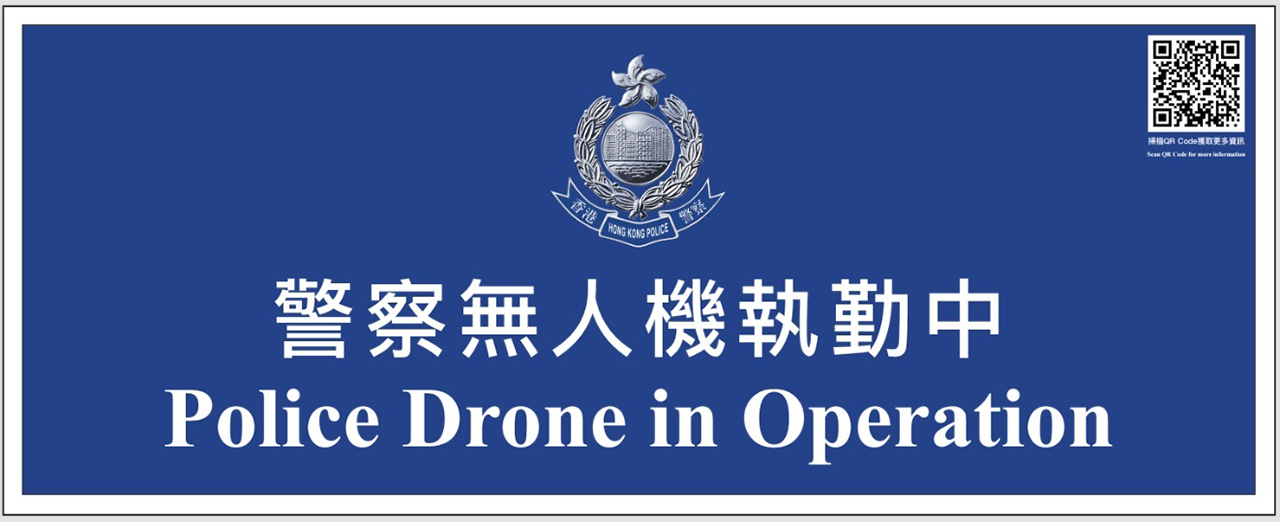The Force is actively promoting "Digital Policing", leveraging technology and streamlining processes to achieve greater efficiency. The Pilot Scheme for 'Operational Deployment of Drones', organized by the Operations Wing, extends the application of drones to various daily policing tasks. This includes using automated drone docking system to formulate flight plans and autonomously execute missions, enhancing patrol efficiency. Additionally, drones are deployed for high-altitude anti-crime patrols in urban downtown areas, strengthening crime prevention and law enforcement while ensuring public safety and order.
Objective of the Pilot Scheme:
The objective of the pilot scheme is to leverage technology for digital policing, deliver high-quality police services, optimize the deployment of frontline personnel, and enhance overall operational efficiency.
Pilot Areas of the Scheme:
- The first phase will be implemented in the Border District and Kowloon West Region for a duration of three months.
- Border District – An automated drone docking system will be deployed, utilizing flight path planning to enable automatic patrol operations. Drones will conduct patrols within predefined zones to enhance border patrol efficiency and enabling more flexible police deployment.
- Kowloon West Region – Through flexible deployment of drones for high-altitude anti-crime patrol, police will expand patrol coverage, enhance operational efficiency, boost rapid response capabilities, and optimize resource allocation.
- Following the conclusion of the initial phase, the program will undergo optimization before being extended to additional areas.
Globally Adopted, Effectively Assisting Law Enforcement
- Law enforcement agencies worldwide—including those in the Chinese Mainland, United States, Australia, Canada, Norway, and Spain —have progressively implemented drone automated patrol systems as part of their daily policing operations.
- Publicly available data on the use of drone automated patrol systems in routine law enforcement across these countries and regions is outlined below:

Privacy Protection
To address or mitigate concerns about potential privacy infringement during drone operations, the police strictly adhere to the recommendations of the Office of the Privacy Commissioner for Personal Data regarding drone usage, including:
- Daily patrols primarily focus on real-time monitoring. Unless required for specific investigative evidence collection, drone patrol is limited to public areas and does not involve private spaces such as building interiors.
- Internal guidelines regulate flight missions, determining whether recording is necessary and how collected footage is handled.
- Careful flight path planning to avoid unnecessary proximity to the public and residential areas.
- Use of red and blue flashing lights to indicate police drone operations.
- All police drones are marked with reflective decals for identification.
- Police remote pilots display notices in the "takeoff zone" to confirm their official identity.
- Signage is placed in drone patrol areas to clearly inform the public that police drones are in operation.

Safety Assurance Measures
- All police drone operations must be conducted by qualified remote pilots. In addition to passing the "Advanced Operations" assessment required under the Small Unmanned Aircraft Order, personnel must complete additional internal police training and certification, which covers flight operations and safety protocols. Only after becoming certified remote pilots are they authorized to operate police drones.
- Prior to any drone mission, qualified personnel conduct comprehensive risk assessments, with key considerations including on-site environmental conditions, weather status, pedestrian and vehicular traffic density, potential sources of interference.
- During flight operations, in addition to real-time monitoring by professional operators, the drone's intelligent systems provide multiple safety assurance functions to ensure flight safety.
- To further enhance safety and respond to emergencies, police drones are equipped with "Unmanned Aircraft Parachute System" when necessary. This system automatically activates in the event of drone malfunction, effectively cushioning the impact of descent. This provides adequate reaction time for ground personnel and the public to avoid potential hazards, while minimizing risks to personnel safety, property damage and the drone itself.
Regulatory Framework
- The Hong Kong Police Force has implemented a comprehensive framework of stringent internal operational guidelines, establishing clear regulatory standards for the oversight of automated drone docking systems.